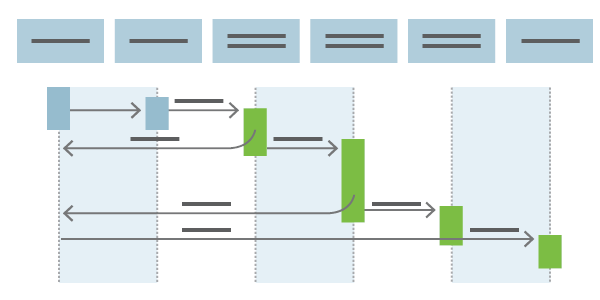What is Continuous Delivery?
Source: What is Continuous Delivery?

Continuous Delivery (CD) is the process to build, test, configure, and deploy from a build to a production environment. Multiple testing or staging environments create a Release Pipeline to automate the creation of infrastructure and deployment of a new build. Successive environments support progressively longer-running activities of integration, load, and user acceptance testing. Continuous Integration starts the CD process and the pipeline stages each successive environment to the next upon successful completion of tests.
CD may sequence multiple deployment rings for progressive exposure (also known as "controlling the blast radius"). Progressive exposure groups users who get to try new releases to monitor their experience in rings. The first deployment ring is often a canary used to test new versions in production before a broader rollout. CD automates deployment from one ring to the next and may optionally depend on an approval step, in which a decision maker signs off on the changes electronically. CD may create an auditable record of the approval in order to satisfy regulatory procedures or other control objectives.
Without CD, software release cycles were previously a bottleneck for application and operation teams. Manual processes led to unreliable releases that produced delays and errors. These teams often relied on handoffs that resulted in issues during release cycles. The automated release pipeline allows a "fail fast" approach to validation, where the tests most likely to fail quickly are run first and longer-running tests happen only after the faster ones complete successfully.
CD is a lean practice with the goal to keep production fresh by achieving the shortest path from the availability of new code in version control or new components in package management to deployment. By automation, CD minimizes the time to deploy and time to mitigate or time to remediate production incidents (TTM and TTR). In lean terms, this optimizes process time and eliminates idle time. CD is helped considerably by the complementary practices of Infrastructure as Code and monitoring.
Continuously delivering value has become a mandatory requirement for organizations. To deliver value to your end users, you must release continually and without errors.
CD also supports two other patterns for progressive exposure beside sequential rings. Blue/Green deployment relies on keeping an existing (blue) version live while a new (green) one is deployed. Typically, this uses load balancing to direct increasing amounts of traffic to the green deployment. If monitoring discovers an incident, traffic can be rerouted to the blue deployment still running. Feature flags (or feature toggles) comprise another technique used for experimentation and dark launches. Feature flags turn features on or off for different end users based on their identity and group membership.
Modern release pipelines allow development teams to deploy new features fast and safely. Issues found in production can be remediated quickly by rolling forward with a new deployment. In this way, CD creates a continuous stream of customer value.
Next steps
Read more about the CD capabilities of GitHub Actions and Azure Pipelines.
Learn how to set up CD to Azure.